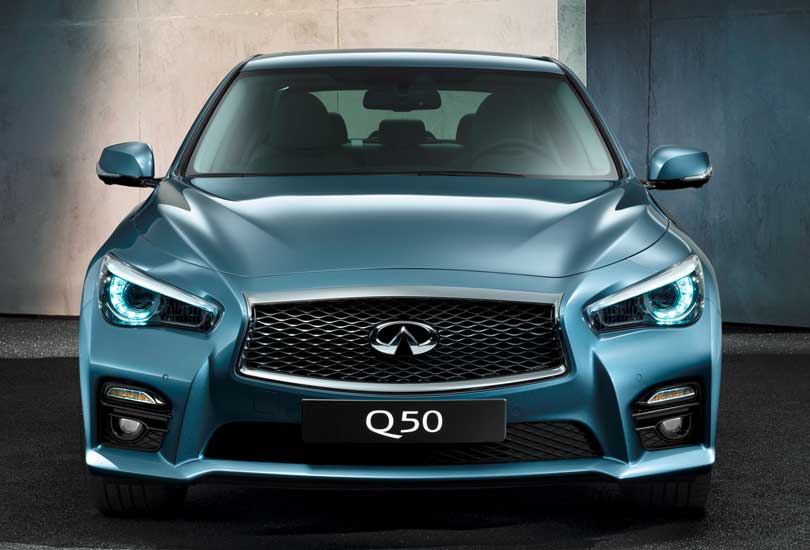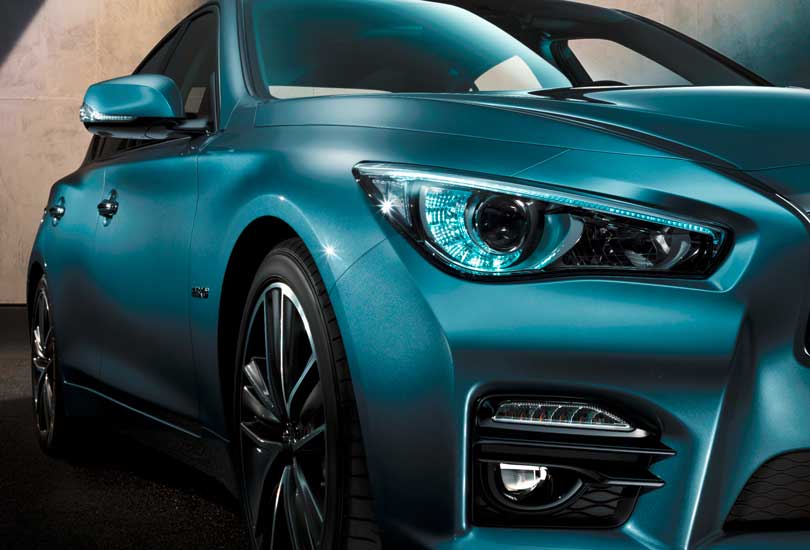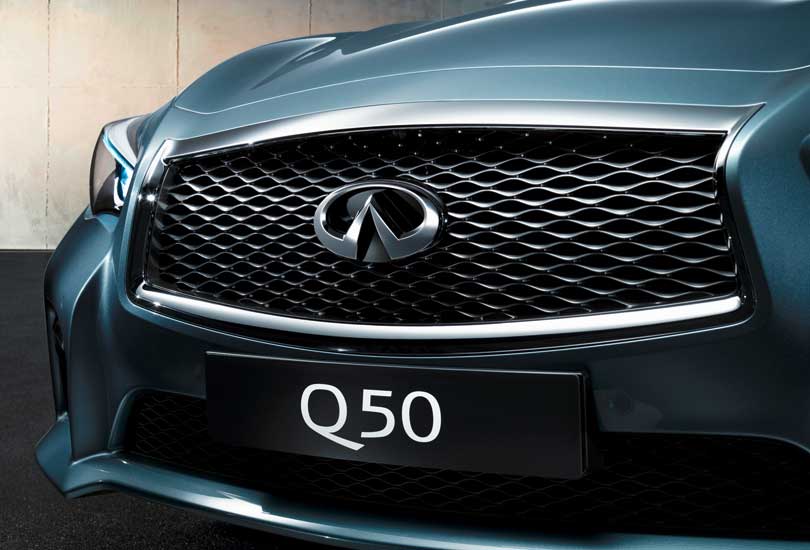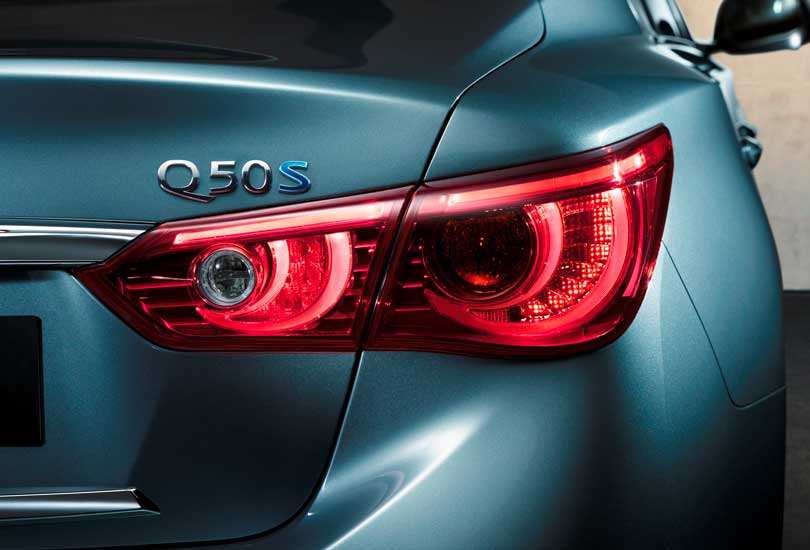How a trio of acclaimed concepts helped shape Infiniti’s all-new saloon
The concept cars Essence, Etherea, Emerg-E shown over the past four years have helped define the seductive and individual appeal of Infiniti, the luxury performance brand from Japan.
And all cars without which the latest Infiniti, the all-new mid-size Q50 premium saloon, could not exist.
From its dynamic headlight shape to its crescent-cut C-pillar and purposeful sporting stance, the Infiniti Q50 embodies many of the most acclaimed design cues from its concept-car forebears in a spacious four-door body.
“The Q50 has Infiniti design DNArunning through it,” said Alfonso Albaisa, Infiniti Executive Design Director. “A concept car to us is far more than a motor show indulgence. It is the canvas on which we paint our production car dreams. Now with the Q50 we see those dreams become real.”
Infiniti design DNA is symbolised by design that is inviting, emotional and born of inspiration from both the human and natural worlds, elements perfectly captured by the new Infiniti Q50. But it is not only the Q50’s exterior design that has been influenced by the Infiniti concept car trilogy – the interior too has benefited from designs and materials from Essence, Etherea and Emerg-E.
“Concept cars make the ideal test bed for the craftsmanship and cutting-edge technology that no Infiniti would be complete without,” added Alfonso Albaisa. “The materials and designs explored in the concept cars have had a big impact on the Q50, and are a large part of the reason the interior is so special.”
Painstaking attention to detail and high quality finish are further examples of the influence the concept trilogy have wrought on the Q50. For example, the Q50’s body brings not just a flowing new elegance to the class but construction techniques so precise that panel fit is among the best available.
FROM CONCEPT TO REALITY
Six ways in which Infiniti’s famous concept car trilogy influenced the Q50
Headlights (Etherea, 2011)
The Q50’s distinctive headlights have changed little since they first previewed on Etherea. With that concept as with the Q50, the lights are very much the car’s “eyes”. Alfonso Albaisa,Infiniti Executive Design Director, says: “The lights allow us to define the Infiniti face more clearly than ever, providing a unique visual signature, day or night.” The light clusters incorporate daytime running lights formed out of a crescent of LEDs, a motif mirrored at the back where the lights are tautly stretched around the car in a way reminiscent of Essence.
Crescent-cut C-pillar (Essence, 2009)
One of Essence’s most distinctive design cues, the crescent-cut C-pillar is used on the Q50 in its purest and most powerful form yet, injecting dynamism into the profile and ensuring the mid-size saloon will always be instantly recognisable. Alfonso Albaisasays: “Since Essence we have known this design of C-pillar was going to play an important role in future Infiniti production cars.”
Three-dimensional double-arch grille (Essence 2009 and Emerg-E, 2012)
The Infiniti double-arch grille – the top span representing the profile of a typical Japanese bridge, the lower span its reflection in the water – has long been an important part of the Infiniti “face”. For the Q50, this grille takes on a more 3-dimensional look with more gravity and depth following the lead set by the design of the Essence concept with its distinctive, highly crafted steel mesh finish. The Q50’s appearance is further strengthened by the grille visually connecting to the base of the A-pillars.
Deep body section (Essence, 2009)
With its deep and steep body section the new Infiniti Q50 has some of the most complex surfaces of any car in its class. It is the result of inheriting design influences successfully advanced with Essence, whose wave-like body sections make the big luxury coupe’s styling so dramatically advanced and effective. For the Q50 the results are just as effective, with the car benefiting from particularly powerful shoulders.
Asymmetrical cabin layout (Essence, 2009, and Emerg-E, 2012)
A driver focus in the cabin is an important part of any Infiniti – as is a welcoming and relaxing front passenger compartment. Essence, and later Emerg-E, managed to achieve both in the same car with a novel Yin-Yang approach, and it is this which the Infiniti Q50 brings into the showroom in production form. The result is an asymmetrical front compartment of two distinct areas, delineated by a line that curves elegantly across the centre console.
Interior finishes (Essence, Etherea and Emerg-E)
Modern interpretations of Japan’s rich arts and crafts tradition are part of the appeal of Infiniti concept cars. They are far more to Infiniti than mere decoration, however. They are integral to who Infiniti is and what it stands for. As such many have a direct influence on the Q50, such as the aluminium inlays whose textures are based on intricate woven patterns.
About the Infiniti Q50
The Infiniti Q50 is the newest and most individual entrant in the mid-size premium class to compete against rivals such as the Audi A4 and BMW Three Series. Designed to appeal to both the heart and the head, the Infiniti Q50 marries the brand’s flowing, concept-car design themes with a welcoming cabin inspired by both high technology and traditional craftsmanship. The four-door, rear- or four-wheel drive saloon is available with a choice of two low CO2, high-performance engines: a 170PS, 400Nm 2.2-litre diesel (115g/km and 4.5 l/100km, 63mpg*), and a 360PS 3.5-litre hybrid (140g/km and 6.0 l/100km, 47mpg*). Depending on market, the Infiniti Q50 goes on sale from autumn 2013.
* CO2 and fuel consumption figures to be confirmed.
No items found, please search again.




